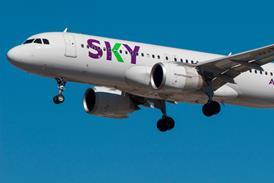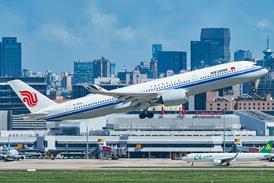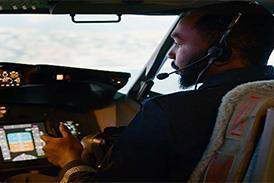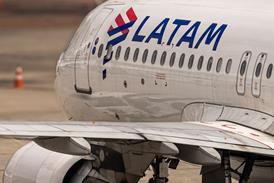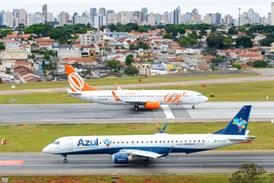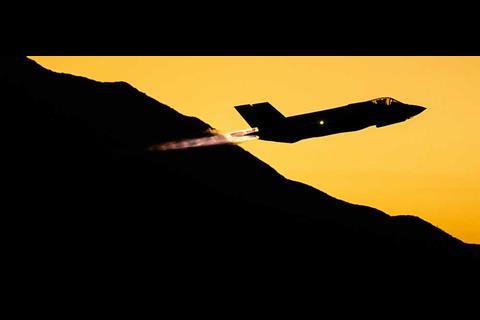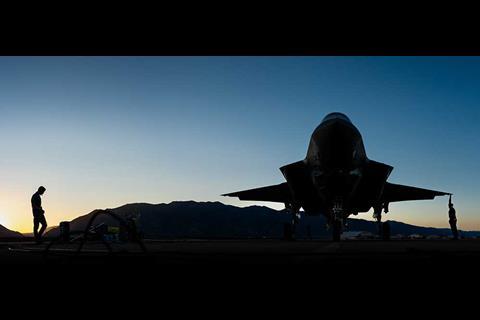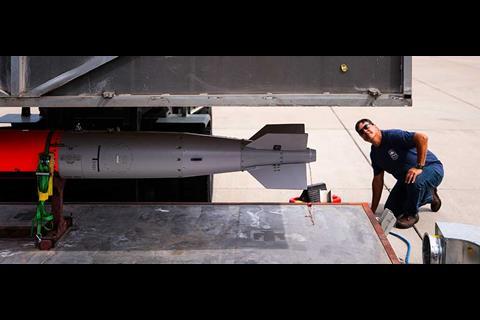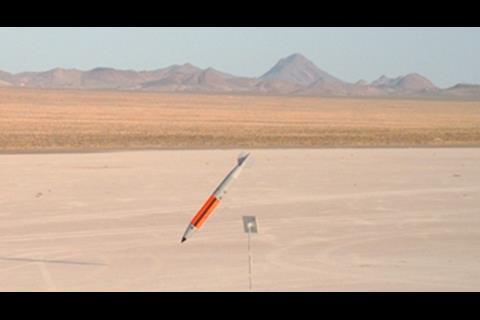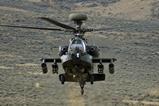A Lockheed Martin F-35A stealth fighter from the US Air Force (USAF) test dropped multiple inert versions of a nuclear bomb in August.
The USA’s Sandia National Laboratories, a Honeywell subsidiary describing itself as the “engineering arm of the US nuclear weapons enterprise”, on 13 November confirmed the integration flight, which involved an F-35A from Hill AFB in Utah carrying test versions of B61-12 nuclear gravity bombs.
There was no nuclear detonation associated with the demonstration.
“The tests… yielded positive results, as inert units of the B61-12 nuclear gravity bomb were successfully carried and dropped by an F-35 aircraft, marking a significant milestone in evaluating the weapon’s performance,” Sandia says.
The USA’s nuclear stockpile is secured and managed by the civilian-controlled National Nuclear Security Administration and national labs like Sandia.
The B61-12 is the latest variant of the long-serving B61 thermonuclear gravity bomb, which entered service in the 1960s and is now the USA’s (and by extension NATO’s) primary air-dropped nuclear munition.
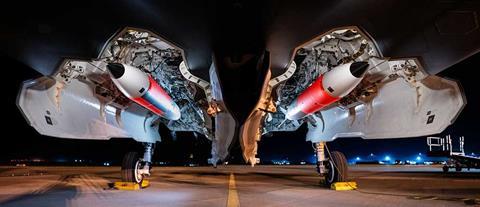
F-35As were certificated to carry B61 bombs in 2023, and two of the jets completed initial inert test drops in 2021.
The August evaluation was the first publicly disclosed nuclear integration test since the certification, and the first time an F-35 deployed a B61 “Joint Test Assembly” – jargon for a B61-12 carrying data collection sensors meant to evaluate weapon system performance.
“The August tests were the only B61-12 stockpile flight tests of joint test assemblies on an F-35 aircraft, solidifying the end-to-end reliability of the aircraft, crews and weapon system during missions,” the laboratory says.
The series also marked the first time thermal preconditioning of a B61 was carried out as part of an F-35 carriage and release flight test. That process subjects the bombs’ casings to the full range of environmental conditions experienced during live-fire missions.
During the August tests, three inert B61 assemblies were dropped on the Tonopah Test Range in Nevada – a secretive facility managed by Sandia and the US Department of Energy. The site is used to complete reliability trials on the USA’s nuclear arsenal and weapons delivery systems.
“Expedient coordination by the entire test team resulted in two successful days of testing to evaluate three test assets,” says Brian Adkins, manager of the Tonopah Test Range.
Images released by Sandia show two B61 munitions loaded in internal weapons bays located on the F-35’s ventral fuselage. Another photograph depicts a B61 moments before impacting the ground.

Compatibility with the F-35’s internal weapons bays is significant, meaning the fighter can carry nuclear weapons while maintaining its low-observability signature.
The USAF’s small fleet of Northrop Grumman B-2 heavy bombers are the only other US stealth aircraft that can drop nuclear weapons.
Other NATO aircraft rated to carry B61-12s include Boeing F-15Es, Lockheed F-16s, Panavia Tornado fighters and Boeing B-52H bombers.
Dassault Aviation’s Rafale F4 is certified to deliver France’s nuclear weapons, which Paris has historically kept independent from NATO’s command structure.
Germany in 2018 expressed interest in certifying its Eurofighters to carry American nuclear bombs, though there has been minimal progress on the idea. Berlin has since committed to fielding F-35As for the dual-capable mission.
Earlier this year, the UK announced plans to supplement its fleet of non-nuclear-rated short take-off and landing F-35Bs with at least a dozen F-35As to restore London’s ability to deliver air-launched nuclear weapons.
In October, F-35As from the Royal Netherlands Air Force led NATO’s “Steadfast Noon” annual nuclear readiness drills – the first time F-35s had done so.
Washington is developing a successor to the B61-12 – predictably dubbed the B61-13.
More photographs of the B61-12 integration test flight:



